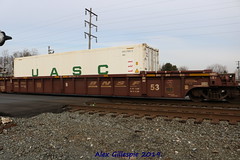How Intermodaling In The Freight Transport Industry Came Into Existence

- Brisbane Storage Unit
How Intermodaling In The Freight Transport Industry Came Into Existence
by
Joseph Mcglown
When shipping large volumes of goods, usually an intermodal system of transportation is used in order to reduce the amount of loss or damage to merchandise thereby increasing potential profits. An intermodal system of transport for freight, for example, (meaning transporting goods via ships, trucks, or trains) can mean reduced costs and a higher security in managing the goods that need to safely arrive from point A to point B .
In the Eighteenth century, even before railways became a major mode of transportation, the earliest forms of intermodal transportation storage containers were used. These containers were utilized for the shipping of large volumes of coal in England through the Bridgewater Canal. Large containers filled with coal known as tubs were transferred from one point to another on the canal and were then transferred to horse drawn carts for road delivery.
Once railroads came into play in the early to mid-eighteen hundreds, wooden coal storage units would be used for moving coal all around England. Back then passengers depended on trains to travel great distances and the Great Eastern Railway sent luggage and goods from one train to the next and ultimately to ocean liners. By the turn of the century, large covered containers were implemented so items could be moved safely and easier from rails to roads eventually to the required destination.
The very first container flats utilized for intermodal transport were used by the Railway Clearing House where they were able to stack the containers for transport. The United States relied heavily upon these quick transfer of goods particularly during World War II when items would have to be transported swiftly between trucks, trains, ships, aircrafts and the warehouses. The decreased need for freight managing as a result meant that there was less of a need to employ pricey personnel and it also meant that unloading and loading times were considerably decreased. During times of war this was especially significant as the military could not afford to wait long periods of time for vital goods to be transferred and eventually delivered to them as time was of the essence in these particularly serious times.
The Canadian Pacific Railway became the first major transport effort and the most depended upon railway in North America by the mid-nineteen hundreds and provided the service of many truck trailers which carried canisters that could easily be transported on and off the train by way of cranes. Steel containers happened by the 1950 s and had very distinct guidelines for safety by the United States Department of Defense as sensitive items would be shipped from one place to another. The standard carry container was often as large as twenty feet by ten feet that was used for intermodal transportation and grew to be as large as forty feet by forty feet by the nineteen sixties enabling more goods to be shipped at one time.
Becoming more and more popular through the years, the steel containers were very popular because they were reliable and quick for transporting a substantial amount of goods. From 1980 to early 2000 s the transportation of canisters grew rapidly from about three million per year to nine million per year. An approach known as \”double-stack rail transport\” was created as new techniques were created in the Intermodal freight transportation system. This process really reduces the probability of damage to goods during transit and provides the highest security of valuable goods.
If you\’re searching to take care of your
intermodal system
from invoices to dispatch you\’ll find the suitable software solution at Compcare Services. For lots more info on
Compcare Services
, explore them at their web site, http://www.compcareservices.com/.
Article Source:
ArticleRich.com